This article was co-authored by Mark Co, DPM. Dr. Mark Co is a Podiatrist who runs his own private practice in San Francisco, California. Dr. Co specializes in treatments for bunions, ingrown toenails, toenail fungus, warts, plantar fasciitis and other causes of foot pain. He also offers custom orthotics for the treatment and prevention of foot and ankle issues. Dr. Co completed a Master of Business Administration (MBA) at New York University and an MA in Electrical Engineering and Computer Science at Johns Hopkins University. Dr. Co also completed his DPM at the California School of Podiatric Medicine and a residency and internship at the Kaiser Permanente Medical Center, Santa Clara, California. Dr. Co was awarded San Francisco's "Top 3 Podiatrists" in 2018, 2019, and 2020. Dr. Co is also a member of the CPMA (American Podiatric Medical Association).
There are 8 references cited in this article, which can be found at the bottom of the page.
wikiHow marks an article as reader-approved once it receives enough positive feedback. This article received 13 testimonials and 92% of readers who voted found it helpful, earning it our reader-approved status.
This article has been viewed 472,536 times.
Buddy taping is a useful and "low-tech" method for treating sprains, dislocations and fractures of toes and fingers.[1] It's commonly done by health professionals such as sports physicians, physiotherapists, podiatrists and chiropractors, but it can be easily learned at home as well. If the taping is done properly, it provides support, protection and helps to realign the involved joints. However, there are complications sometimes associated with buddy taping, such as compromised blood supply, infections and loss of joint motion.
Steps
Buddy Taping Your Injured Toe
-
1Identify which toe is injured. Toes are very susceptible to injury and even breaking when exposed to blunt trauma, such as stubbing them against furniture or kicking sports equipment around. In most cases, it's obvious which toe is injured, but sometimes you need to examine your toes closely to better understand the injury. Signs of mild-to-moderate injuries include redness, swelling, inflammation, localized pain, bruising, reduced motion, and maybe some degree of crookedness if the toe is dislocated or broken. The smallest toe (5th) and the great toe (1st) are injured and broken more often than the other toes.[2]
- Buddy taping can be used on most toe injuries, even stress or hairline fractures, although more serious fractures typically need casting or surgery.[3]
- See your doctor right away if your toe is pointing the wrong direction, extremely painful, or swelling to the point of becoming numb.[4]
- Small hairline fractures, bone chips, contusions (bruises), and joint sprains are not considered serious problems, but severely crushed toes (mangled and bleeding) or displaced compound fractures (bleeding with bone sticking out of the skin) require immediate medical intervention, especially if the big toe is involved.
-
2Decide which toes to tape. Once you've established which toe is injured, you need to decide which toe to tape it to. In general, try to tape toes together that are close in length and thickness — if your second toe is injured, it's easier to tape it to your third toe than your big (first) toe due to the similarity in size. Furthermore, your big toe is needed for "toeing off" every time you take a step, so it's not a good choice for buddy taping. In addition, make sure the "buddy" toe is uninjured, because taping two injured toes together may make things worse. In such situations, casting or wearing a compression boot may be a better idea.
- If your fourth toe is injured, tape it to the third toe instead of the fifth because they are more equal in size and length.
- Don't buddy tape an injured toe if you have diabetes or peripheral arterial disease because any reduction in blood circulation from taping it too tight significantly increases the risk of necrosis (tissue death).[5]
Advertisement -
3Loosely tape the toes together. Once you've decided on which two toes to tape together, grab some medical or surgical tape and loosely tape your injured toe to the uninjured one, perhaps using a figure-eight pattern for the most stability. Be careful not to tape too tightly, otherwise you'll create additional swelling and may even cut off blood circulation to the injured toe.[6] Consider placing some cotton gauze between the toes to prevent skin abrasion and/or blisters. Your risk of bacterial infection significantly increases with blistering and abrasions.
- Don't use so much tape that you can't fit your foot into your shoes. Furthermore, too much tape promotes overheating and perspiration.
- Materials used for binding toes include medical / surgical paper tape, self-adherent wrap, electricians tape, small Velcro wraps and rubber bandages.[7]
- To provide a little more support, which is certainly beneficial for dislocated toes, you can use a wooden or metal splint along with the tape. For toes, popsicle sticks work well, just make sure there are no sharp edges or splinters that can dig into the skin.
-
4Change the tape after bathing. If your toe is initially buddy taped by your doctor or another healthcare professional, then they likely used water resistant tape so that it's safe to take a shower or bath at least once. However, as a general guideline, be prepared to re-tape your toes after every washing so that you can check for any signs of skin irritation or infection.[8] Abrasions, blisters and calluses increase the likelihood of a skin infection, so clean and dry your toes thoroughly before re-taping them. Consider cleaning your toes with alcohol wipes to disinfect them.
- Signs of a skin infection include local swelling, redness, throbbing pain, and discharge of pus.
- Your injured toe, depending on the severity of the injury, may need to be buddy-taped for up to four weeks to properly heal, so you'll likely become very experienced at re-taping it.
- If your injured toe hurts more after re-taping it, then remove the tape and start over, but make sure the tape or wrap is a little looser.
Understanding Potential Complications
-
1Look for signs of necrosis. As noted above, necrosis is a type of tissue death due to lack of blood supply and oxygen. An injured toe, particularly a dislocation or fracture, may already involve damaged blood vessels, so you have to be extra careful when buddy taping not to cut off circulation to the toes. If you accidentally do, then the toes will likely start to throb with achy pain and turn dark red, then dark blue.[9] Most tissue can survive without oxygen for a couple hours (at most), but it's imperative to carefully observe your toes within a 1/2 hour or so of taping to make sure they are getting enough blood.
- People with diabetes have much less feeling in their toes and feet, and tend to have poor circulation, which is why they should avoid buddy taping toe injuries.
- If necrosis does occur in the toes, then amputation surgery is needed to remove them so infection doesn't spread to the rest of the foot or leg.
- If you experienced an open compound fracture, your doctor may recommend a precautionary two-week course of oral antibiotics to deter a bacterial infection.
-
2Don't tape a severely fractured toe. Although most injuries respond well to taping, some are beyond its scope. When toes are crushed and completely shattered (referred to as a comminuted fracture) or fractured such that the bones radically misalign and stick out through the skin (called an open compound fracture), then no amount of taping is helpful. Instead, you need to get to an emergency department immediately for medical attention and likely a surgical procedure.
- Common symptoms of a broken toe include: intense sharp pain, swelling, stiffness, and usually immediate bruising due to internal bleeding. Walking is difficult, and running or jumping is nearly impossible without excruciating pain. You may also see your toe pointing a different direction than normal.[10]
- Broken toes can be related to conditions that weaken bone, such as bone cancer, bone infections, osteoporosis or chronic diabetes.[11]
- Your toe may not appear displaced even if it's broken. The only way to tell whether your toe is broken or sprained is by getting an X-ray done, so if you've injured your toe, you should see a doctor.[12]
-
3Protect your toe from further damage. Once your toe is injured, it's even more susceptible to other damage and problems. As such, wear comfortable and protective shoes while taping your toes (anywhere from two to 6 weeks). Choose close-toed, comfortable fitting shoes that have plenty of room in the toe cap to accommodate the tape/gauze and any associated swelling. Hard-soled, supportive, and sturdy shoes are likely the most protective, so avoid flip-flops and soft slip-on types. Completely avoid high-heel shoes for at least a few months post-injury because they severely crowd the toes and restrict blood flow.[13]
- Supportive open-toed sandals can be used if the swelling in your toe is excessive, but remember that they don't offer any protection, so wear them with caution.
- If you work in construction, or as a firefighter, police officer or landscaper, consider wearing steel-toed boots for added protection until your toe completely heals.
Expert Q&A
-
QuestionWhat should I tape when my second and third toe are sprained?
 Chris M. Matsko, MDDr. Chris M. Matsko is a retired physician based in Pittsburgh, Pennsylvania. With over 25 years of medical research experience, Dr. Matsko was awarded the Pittsburgh Cornell University Leadership Award for Excellence. He holds a BS in Nutritional Science from Cornell University and an MD from the Temple University School of Medicine in 2007. Dr. Matsko earned a Research Writing Certification from the American Medical Writers Association (AMWA) in 2016 and a Medical Writing & Editing Certification from the University of Chicago in 2017.
Chris M. Matsko, MDDr. Chris M. Matsko is a retired physician based in Pittsburgh, Pennsylvania. With over 25 years of medical research experience, Dr. Matsko was awarded the Pittsburgh Cornell University Leadership Award for Excellence. He holds a BS in Nutritional Science from Cornell University and an MD from the Temple University School of Medicine in 2007. Dr. Matsko earned a Research Writing Certification from the American Medical Writers Association (AMWA) in 2016 and a Medical Writing & Editing Certification from the University of Chicago in 2017.
Family Medicine Physician Tape the two toes together. Watch our for redness or discoloration after taping because this could be a sign that you wrapped the tape too tight and need to start over, wrapping the toes a little looser this time.
Tape the two toes together. Watch our for redness or discoloration after taping because this could be a sign that you wrapped the tape too tight and need to start over, wrapping the toes a little looser this time. -
QuestionHow long should I keep my toe taped?
 Chris M. Matsko, MDDr. Chris M. Matsko is a retired physician based in Pittsburgh, Pennsylvania. With over 25 years of medical research experience, Dr. Matsko was awarded the Pittsburgh Cornell University Leadership Award for Excellence. He holds a BS in Nutritional Science from Cornell University and an MD from the Temple University School of Medicine in 2007. Dr. Matsko earned a Research Writing Certification from the American Medical Writers Association (AMWA) in 2016 and a Medical Writing & Editing Certification from the University of Chicago in 2017.
Chris M. Matsko, MDDr. Chris M. Matsko is a retired physician based in Pittsburgh, Pennsylvania. With over 25 years of medical research experience, Dr. Matsko was awarded the Pittsburgh Cornell University Leadership Award for Excellence. He holds a BS in Nutritional Science from Cornell University and an MD from the Temple University School of Medicine in 2007. Dr. Matsko earned a Research Writing Certification from the American Medical Writers Association (AMWA) in 2016 and a Medical Writing & Editing Certification from the University of Chicago in 2017.
Family Medicine Physician If you pain does not go away in couple days I would seek the attention of a medical doctor or podiatrist.
If you pain does not go away in couple days I would seek the attention of a medical doctor or podiatrist. -
QuestionHow can I tell if my toe is broken or just sprained?
 Mark Co, DPMDr. Mark Co is a Podiatrist who runs his own private practice in San Francisco, California. Dr. Co specializes in treatments for bunions, ingrown toenails, toenail fungus, warts, plantar fasciitis and other causes of foot pain. He also offers custom orthotics for the treatment and prevention of foot and ankle issues. Dr. Co completed a Master of Business Administration (MBA) at New York University and an MA in Electrical Engineering and Computer Science at Johns Hopkins University. Dr. Co also completed his DPM at the California School of Podiatric Medicine and a residency and internship at the Kaiser Permanente Medical Center, Santa Clara, California. Dr. Co was awarded San Francisco's "Top 3 Podiatrists" in 2018, 2019, and 2020. Dr. Co is also a member of the CPMA (American Podiatric Medical Association).
Mark Co, DPMDr. Mark Co is a Podiatrist who runs his own private practice in San Francisco, California. Dr. Co specializes in treatments for bunions, ingrown toenails, toenail fungus, warts, plantar fasciitis and other causes of foot pain. He also offers custom orthotics for the treatment and prevention of foot and ankle issues. Dr. Co completed a Master of Business Administration (MBA) at New York University and an MA in Electrical Engineering and Computer Science at Johns Hopkins University. Dr. Co also completed his DPM at the California School of Podiatric Medicine and a residency and internship at the Kaiser Permanente Medical Center, Santa Clara, California. Dr. Co was awarded San Francisco's "Top 3 Podiatrists" in 2018, 2019, and 2020. Dr. Co is also a member of the CPMA (American Podiatric Medical Association).
Podiatrist The only definitive way to tell whether it's broken or sprain is by getting an X-ray done, so you should see a doctor.
The only definitive way to tell whether it's broken or sprain is by getting an X-ray done, so you should see a doctor.
Warning
- See a doctor if you suspect a broken toe. Buddy taping is a good short-term measure for most types of toe injures, but fractures always need medical attention.
References
- ↑ http://www.ncbi.nlm.nih.gov/pmc/articles/PMC3942599/
- ↑ https://www.aofas.org/footcaremd/conditions/ailments-of-the-big-toe/Pages/Toe-and-Forefoot-Fractures.aspx
- ↑ http://www.medicinenet.com/broken_toe/page5.htm
- ↑ Mark Co, DPM. Podiatrist. Expert Interview. 21 April 2020.
- ↑ http://www.uofmhealth.org/health-library/aa4924spec
- ↑ http://www.medicinenet.com/broken_toe/page5.htm
- ↑ http://www.ncbi.nlm.nih.gov/pmc/articles/PMC3942599/
- ↑ http://www.emedicinehealth.com/broken_toe/page8_em.htm
- ↑ http://www.ncbi.nlm.nih.gov/pmc/articles/PMC1125886/
- ↑ Mark Co, DPM. Podiatrist. Expert Interview. 21 April 2020.
- ↑ https://www.aofas.org/footcaremd/conditions/ailments-of-the-big-toe/Pages/Toe-and-Forefoot-Fractures.aspx
- ↑ Mark Co, DPM. Podiatrist. Expert Interview. 21 April 2020.
- ↑ https://orthoinfo.aaos.org/en/diseases--conditions/fractures-broken-bones
About This Article
To buddy tape an injured toe, loosely tape it to an uninjured toe that’s close to the same length and thickness with medical tape. For example, if your second toe is injured, tape it to your third toe rather than your big toe. You should also consider placing cotton gauze between the toes to reduce the risk of infection. Additionally, retape your toe after every bath or shower so you can check for infection or skin irritation. For tips from our Medical co-author on how to identify damaged blood vessels in your toe, read on!
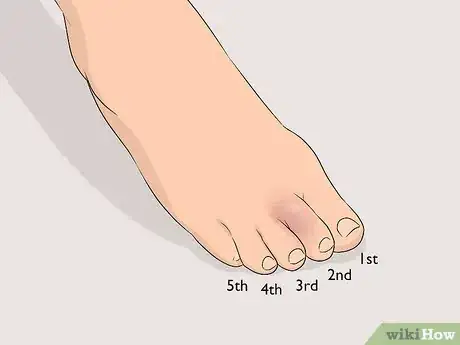


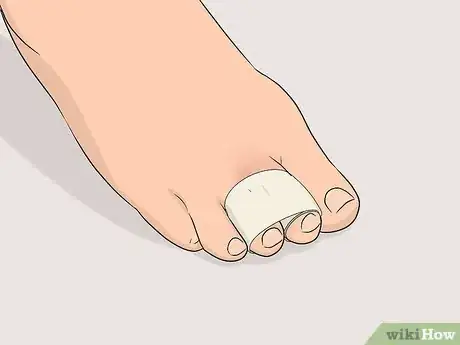
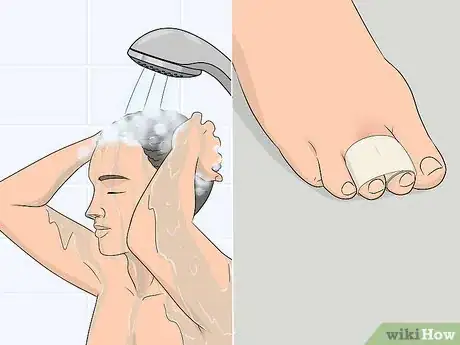
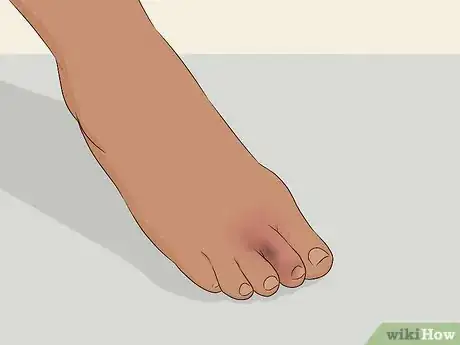
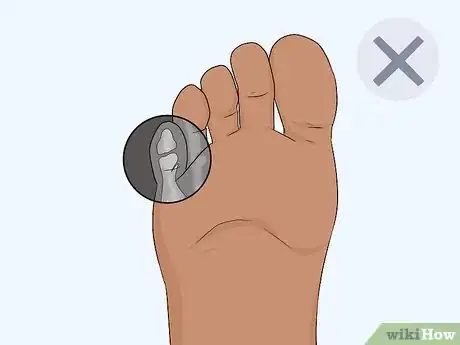
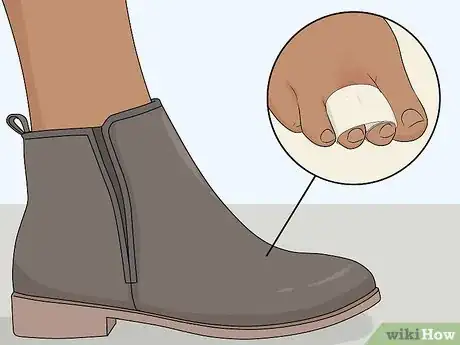

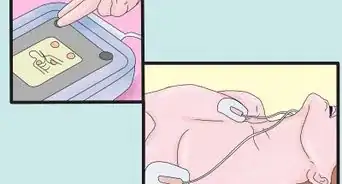
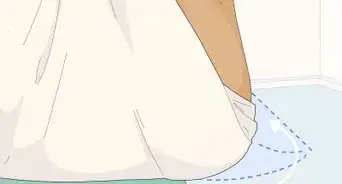
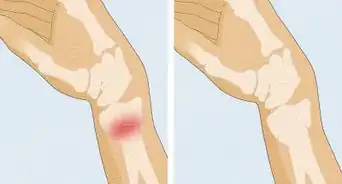
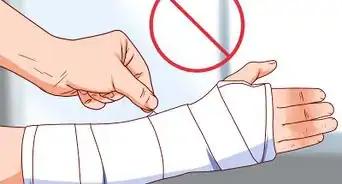
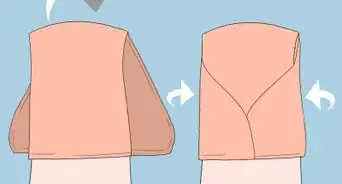
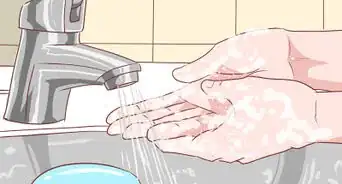
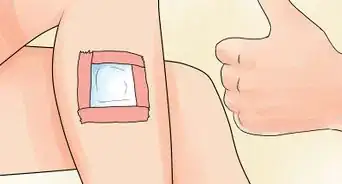
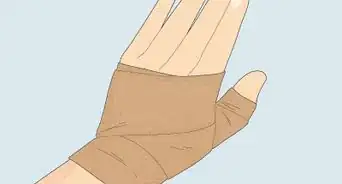
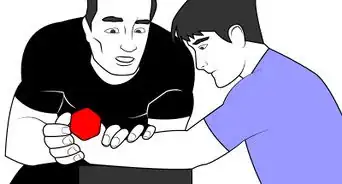
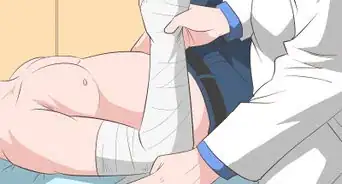
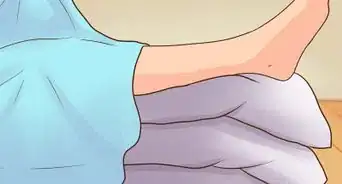
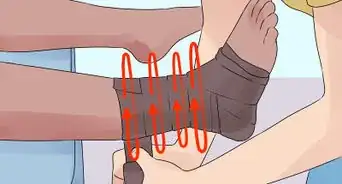
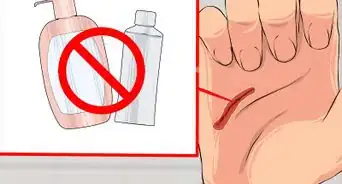










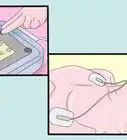
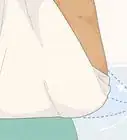
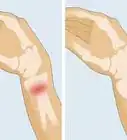



































Medical Disclaimer
The content of this article is not intended to be a substitute for professional medical advice, examination, diagnosis, or treatment. You should always contact your doctor or other qualified healthcare professional before starting, changing, or stopping any kind of health treatment.
Read More...